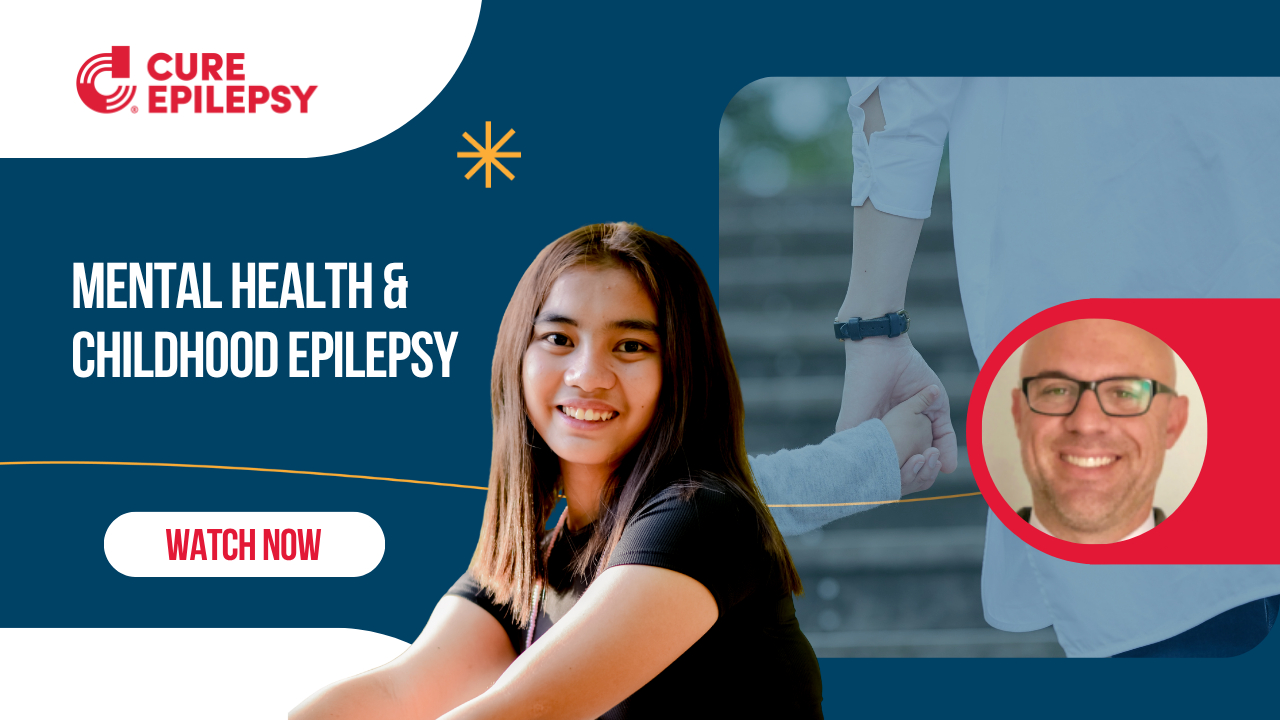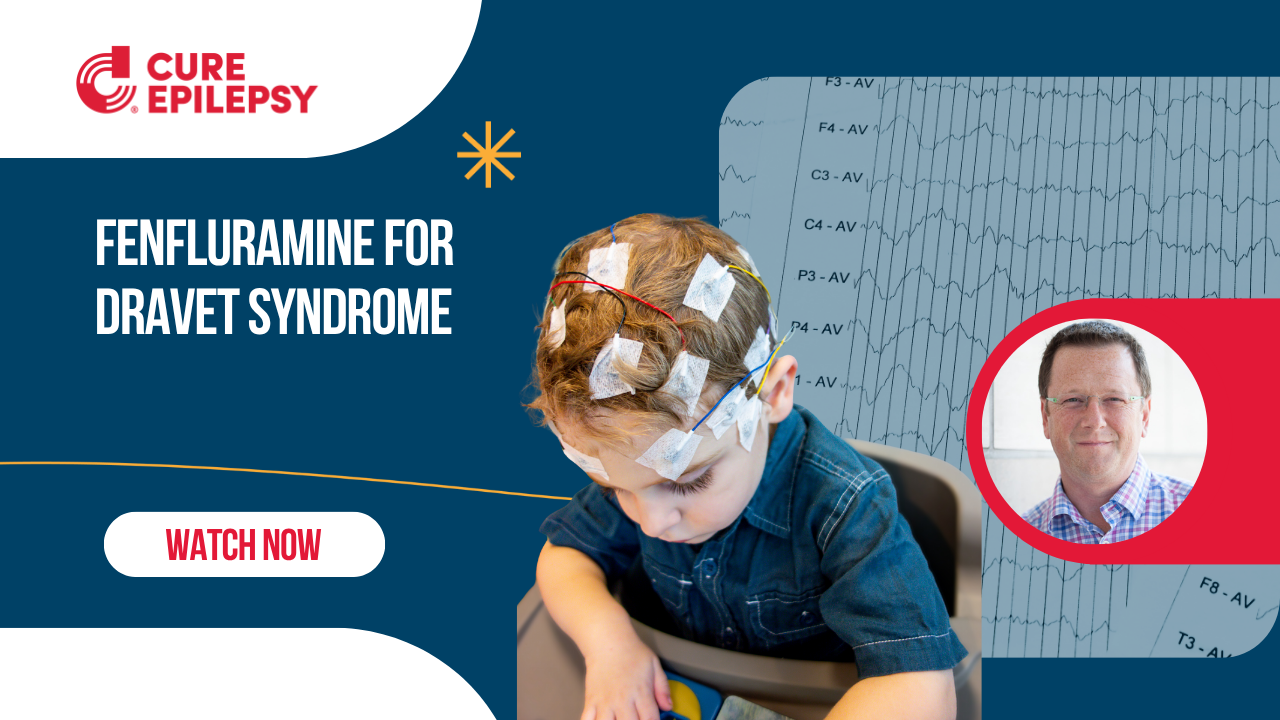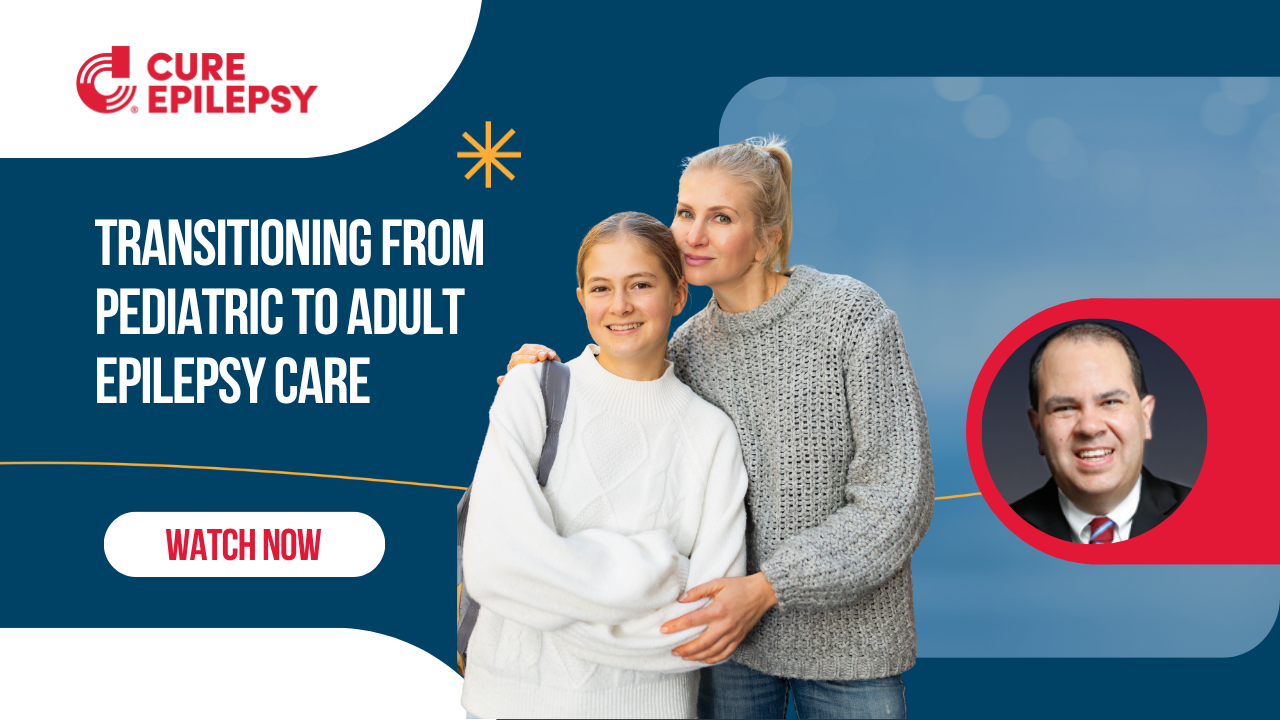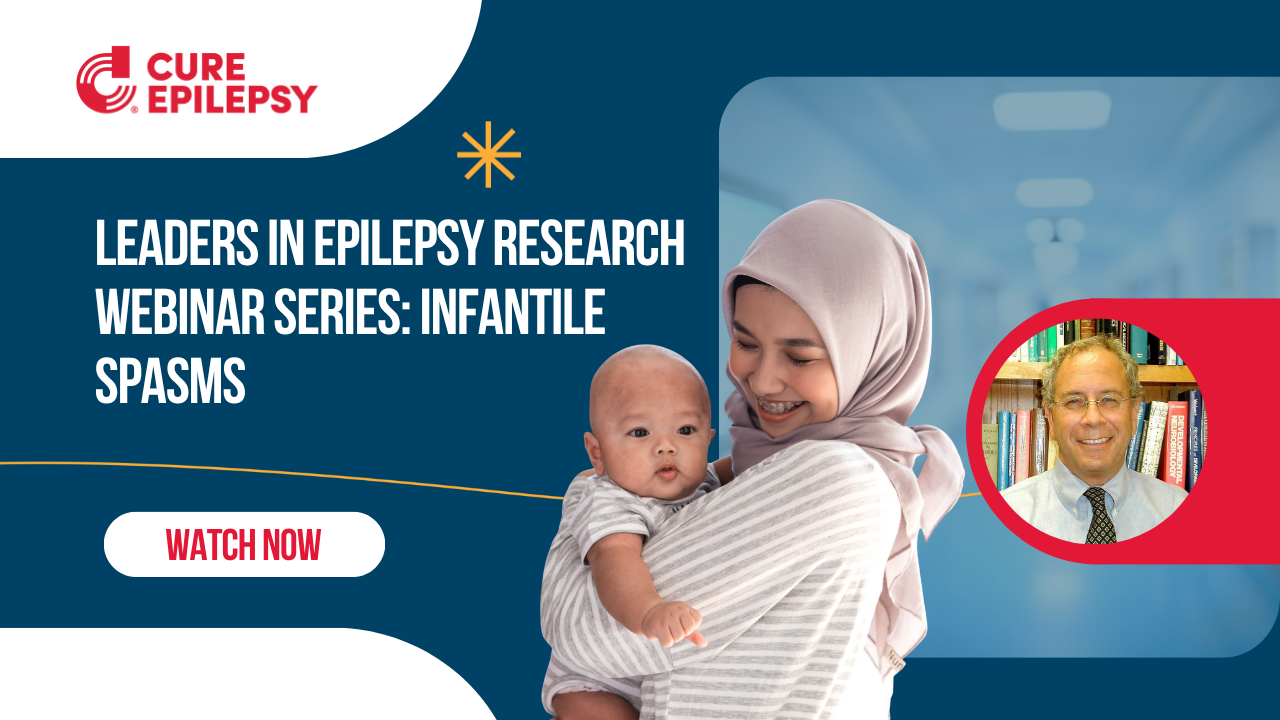This webinar focuses on the challenges of diagnosing and treating infantile spasms, and how advances in epilepsy medicine and technology have improved this process. This presentation also examines currently available treatment options.
The presenter is Dr. Shaun Hussain, Assistant Professor of Pediatrics at UCLA, Director of the UCLA Infantile Spasms Program, and inaugural recipient of the Elsie and Isaac Fogelman Endowed Chair in Pediatric Neurology. His clinical and research endeavors focus on Infantile Spasms and other forms of severe pediatric epilepsy, including Lennox-Gastaut syndrome and Dravet syndrome.
Q&A Transcript
If an infant gains control over their infantile spasms and normalize the hypsarrhythmia, is there a greater likelihood of normal neurological development?
That’s a tough question. That is certainly the goal of therapy in the short term, and it seems to be pretty clear that if you don’t completely abolish spasms and the hypsarrhythmia, development will not turn out well. At UCLA, we follow almost 500 patients, and I can’t think of a single one who had a long-term burden of infantile spasms or long-term burden of hypsarrhythmia and did well.
In order to get a good developmental outcome, you have to abolish spasms. You have to abolish hypsarrhythmia. And you have to be a little bit lucky. You have to find that the cause of the infantile spasms is not itself something that can damage development. But in short, I would say you simply can’t tolerate any infantile spasms or hypsarrhythmia. If either of those are present, it means that you need to try different therapy.
If a gene panel doesn’t reveal a known genetic cause of infantile spasms, but a child has been seizure- and med-free for several years, do you recommend further genetic testing?
It’s tough. The answer to that question has to be pretty individualized, but usually the answer is no. The odds of us identifying a meaningful genetic abnormality that impacts our treatment – would tell us to begin or stop a therapy – is actually very, very low at that point.
On the other hand, if the parents are thinking about having another kid, it would be very nice to do that genetic testing and get a sense of whether there is any risk posed to the next child. There is unfortunately, very little data about the risk in general. In thinking about our cohort here at UCLA of nearly 500 patients, there have been only a couple cases in which a sibling also had infantile spasms after the first child.
Let’s say overall risk is pretty low. If it was me, I would want to do that genetic testing to figure that out. But there are also risks of genetic testing. Sometimes you might find out that a child, sibling, or parent are at risk for some other disorder associated with infantile spasms. It’s a big discussion, a difficult decision often, and you have to go into that decision-making process knowing all the risks and benefits of genetic testing.
If the first course of treatment was not effective, does this equate to a delay in treatment and, therefore, a poor prognosis for future development?
We don’t actually know the answer. My sense is that the delay in finding an effective therapy probably poses some risk, but we don’t know how much. The first therapy not working probably means that the child has overall worse infantile spasms and may be at risk for bad outcomes on that basis.
The short answer is, I don’t know. But the second answer is that it doesn’t matter. If you’ve got ongoing spasms, you just got to change your treatment approach and be aggressive. Don’t be afraid of those side effects and focus on eradicating infantile spasms.
Is surgery only considered when seizures don’t respond to certain medications? Or can it also be an option when the MRI and PET scans indicate a specific portion of the brain causing abnormal EEG activity, indicating a risk of seizures, even after hypsarrhythmia has been resolved?
There is certainly no consensus in answering that, so I want point out a couple things. There are patients who have structural abnormalities – things like cortical dysplasia – who will respond to first line therapy and not need that surgery. We have multiple individuals in our cohort who responded to therapy and seemed to be doing just fine.
I will also tell you that there are patients with that exact story ; they had infantile spasms, they had a lesion that could be removed, they responded to therapy, and we said, “Well, you don’t have hypsarrhythmia, you don’t have spasms, you seem to be doing well developmentally.” Then several years later or a decade later, we have either the return of infantile spasms, epileptic spasms, or other types of seizures. Then we have to think, “Whoa, it would have been nice to have removed that piece of brain back when that patient was an infant and when the risks and costs of surgery would have been less.”
It’s a really tough decision. I think if you asked a neurosurgeon, they would be hard pressed to remove pieces of brain in a patient who did not have ongoing infantile spasms or hypsarrhythmia. But I’m not sure that’s the right decision.
I would put it this way though: if you have ongoing spasms or hypsarrhythmia and you have identified a lesion that can be removed to potentially cure the infantile spasms, that is almost always the right path. We’ve seen that all the relapse rates are pretty high across the board, they’re much lower and those patients who are good surgical candidates and undergo a successful surgery.
You mentioned the importance of immediate diagnosis. To clarify, does that mean from the first visible spasm or from the onset of hypsarrhythmia? Could there have been hypsarrhythmia for weeks or months prior to the first visible spasm?
It refers to the interval from the first identified spasm to effective treatment. And it’s very possible that hypsarrhythmia is brewing or emerging or growing before that first spasm.
A big focus of ongoing research is to identify patients who are at risk and then sequentially check their EEG every few weeks looking for the possibility that hypsarrhythmia or infantile spasms are on the way. That might be an opportunity to treat infantile spasms when they aren’t as bad, meaning there maybe a higher opportunity to prevent them from ever happening at all.
What are the chances of stopping spasms with the combination of ACTH and vigabatrin, if the spasms have been going on for one year or more?
The odds are not great, but they’re not zero. When we look at the patients who are relatively new to the treatment combination, the response rate is in the mid-70s, about 75% is our best estimate. The odds of response after months or years of ongoing spasms – especially with ongoing hypsarrhythmia – is considerably lower. We don’t have good estimates of what that risk looks like.
But there have been plenty of patients who have had spasms for a year and failed specific therapies, like the first line therapies, but when the medications were tried a year later, they did work.
I think it’s worth consideration. Just because a therapy didn’t work a year ago doesn’t mean that it won’t work now. Infantile spasms and hypsarrhythmia are dynamic process and they’re changing. And just because it didn’t work in the past doesn’t mean that it won’t work now.
Unfortunately, the reverse is also true. You can imagine a patient who was diagnosed quickly, who responded to say ACTH and that spasms returned six months later. Just because they responded the first time doesn’t mean that they’ll respond the second time.
If a child’s spasms are brought under control, is this child more likely than the general population to develop epilepsy down the road?
It’s absolutely true. We don’t quite know the magnitude of that risk. But I would say that it’s pretty substantial. It also depends on the cause of epilepsy. For example, if a patient has one of the most common structural abnormalities that cause the infantile spasm (something like a focal cortical dysplasia), then the risk of epilepsy down the road in the absence of surgery is pretty substantial. I would say it’s probably in the neighborhood of 50 or more percent.
But it really varies. It’s hard to predict. I would just say that, yes, you’re at elevated risk. You have to be on the lookout for the return of infantile spasms or the emergence of other types of epilepsy.
You mentioned that vision loss can accompany infantile spasms. Do you have any advice if delayed speech is concerned in a child who has suffered from IS?
That is actually one of the most common concerns. To the extent that infantile spasms and hypsarrhythmia can hurt development, it seems that they disproportionately affect language. But we actually don’t know why that is.
When we conceptualized infantile spasms, they are a form of seizure and epilepsy that hijacks the entire brain, but seem to have a disproportionate impact on the temporal lobes. And the temporal lobes are very important, especially the left temporal lobe, for processing and understanding language. That seems to be a pretty big barrier for graduates of infantile spasms, including those who have responded pretty quickly to therapy.
We have a very low threshold for referring patients for speech therapy. I would say many cases, especially those which have responded robustly and quickly to therapy, are actually very good responders to speech therapy. It is something actionable, but not something too alarming. I would say that there are many, many patients who have good outcomes after infantile spasms, and many of them had some degree of speech delay.
Can other seizure types early on mask the presence of infantile spasms?
Absolutely. Another factor is that infantile spasms are sometimes subtle and don’t really register as seizures with most people. When you think about the general public, if they saw a video of a child having infantile spasms, most people would not say, “Oh, that looks like a seizure.” They would say, “I’m not sure what that is. It’s probably nothing. Maybe it’s an infant heartburn or gastroesophageal reflux.”
Infantile spasms visually don’t register and don’t register on that fear meter. But when you think about most other types of seizures, they’re rather dramatic, especially if you think about something like a generalized tonic-clonic seizure, those are much scarier, much more obvious.
If you imagine a patient who’s having both generalized tonic-clonic seizures and infantile spasms, it’s pretty easy to see how everyone’s attention – parents, pediatricians, neurologists – would likely be focused on those generalized tonic-clonic seizures because they’re so dramatic. That is also probably part of the challenge. We have to keep infantile spasms in mind as part of the possibilities of seizures and infancy.
When we teach our trainees, our residents and fellows, we’re telling them, “Look, this is an infant. You need to have infantile spasms in the back of your mind, no matter what kind of seizure they’re showing you right now.”
Is vigabatrin known to cause myoclonic jerks? If these jerks are not epileptic, can you stop once the child is weaned?
It’s not exactly clear. There’s a pretty widespread rumor that vigabatrin can cause myoclonic jerks or myoclonic seizures, and that they can be classified as epileptic or nonepileptic. I would say, don’t worry about any of that.
I think it’s probably true that a minority of patients who are treated with vigabatrin have either the emergence or worsening of myoclonic seizures. These seizures are reversible after stopping vigabatrin therapy.
The big question is; if vigabatrin is working to stop the spasms, should you stop the vigabatrin to make those myoclonic jerks and myoclonic seizures better? I think that has to be considered on a case by case basis.
The information contained herein is provided for general information only and does not offer medical advice or recommendations. Individuals should not rely on this information as a substitute for consultations with qualified healthcare professionals who are familiar with individual medical conditions and needs. CURE Epilepsy strongly recommends that care and treatment decisions related to epilepsy and any other medical condition be made in consultation with a patient’s physician or other qualified healthcare professionals who are familiar with the individual’s specific health situation.









